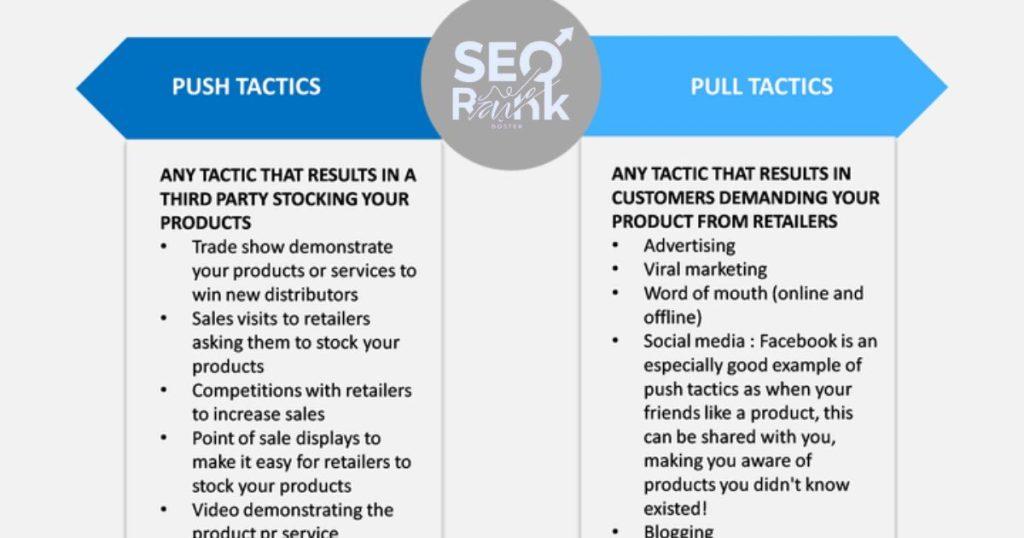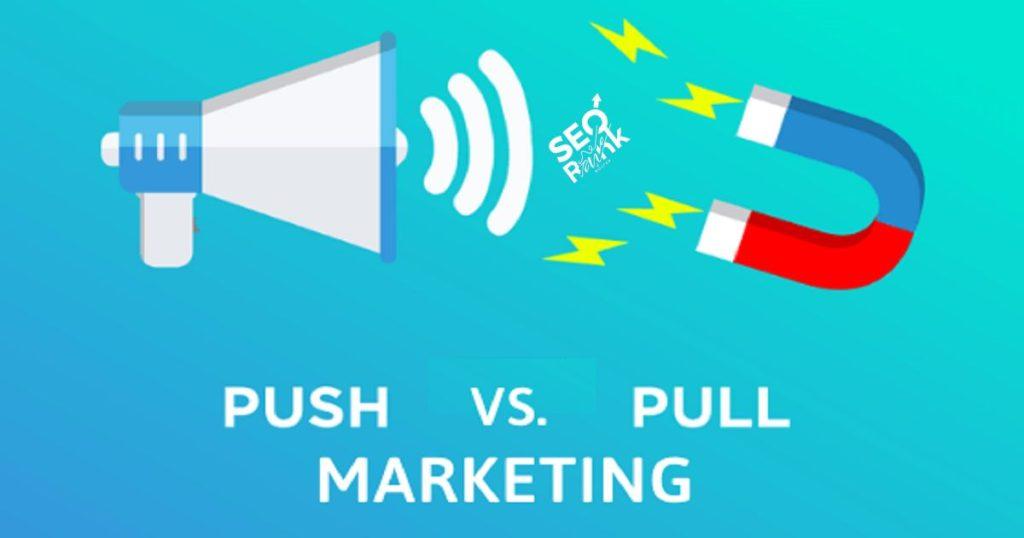Table of Contents
TogglePush vs. Pull Marketing: Which Strategy Suits Your Business Best
Introduction
Marketing strategies are crucial for the success of any business. Two fundamental approaches are push marketing and pull marketing. Understanding the differences, advantages, and disadvantages of each can help businesses choose the right strategy to achieve their goals.
Definition of Push Marketing
Push marketing involves promoting products directly to consumers, often through aggressive advertising and sales tactics. The goal is to push the product onto the audience, creating demand through direct interaction.
Definition of Pull Marketing
Pull marketing, on the other hand, focuses on attracting customers to the product. This strategy involves creating valuable content and experiences that draw consumers in, encouraging them to seek out the brand on their own.
Importance of Marketing Strategies for Business Success
Effective marketing strategies are essential for reaching target audiences, building brand awareness, and driving sales. Whether using push, pull, or a combination of both, the right approach can significantly impact a business’s success.
Push Marketing Overview
Characteristics of Push Marketing
Direct Promotion: Push marketing relies on direct promotional efforts to reach consumers.
Target Audience: It focuses on targeting a specific audience segment with the intention of generating immediate sales.
Sales Focus: The primary goal is to push products and drive quick sales.
Common Push Marketing Techniques
Trade Shows: Businesses showcase their products at industry events to attract potential buyers.
Direct Mail: Sending promotional materials directly to consumers’ homes or businesses.
Email Campaigns: Targeted email blasts to inform potential customers about products or services.
Examples of Push Marketing in Various Industries
Push marketing is prevalent in industries such as FMCG (Fast-Moving Consumer Goods), pharmaceuticals, and automotive, where direct promotion is crucial for driving sales.
Advantages of Push Marketing
- Quick results and immediate sales boost.
- Control over the marketing message.
- Effective for launching new products.
Disadvantages of Push Marketing
- Can be expensive due to high advertising costs.
- Risk of alienating consumers with aggressive tactics.
- Short-term focus may not build long-term brand loyalty.
Pull Marketing Overview
Characteristics of Pull Marketing
Consumer Attraction: Pull marketing aims to attract consumers naturally by creating valuable content and experiences.
Brand Loyalty Focus: Emphasis on building long-term relationships with customers.
Content Marketing: Utilizes blogs, videos, social media, and other content to engage Audiences.
Common Pull Marketing Techniques
SEO: Optimizing content to rank higher in search engine results and attract organic traffic.
Social Media Marketing: Engaging with audiences on platforms like Facebook, Instagram, and Twitter.
Content Marketing: Creating informative and entertaining content that draws customers in.
Examples of Pull Marketing in Various Industries
Industries such as technology, fashion, and entertainment often use pull marketing to create a strong brand presence and attract loyal customers.
Advantages of Pull Marketing
- Builds long-term brand loyalty.
- Cost-effective over time with lower advertising costs.
- Engages customers with valuable content.
Disadvantages of Pull Marketing
- Slower to see results compared to push marketing.
- Requires consistent effort and high-quality content.
- Less control over the marketing message.
Comparative Analysis of Push and Pull Marketing

Key Differences Between Push and Pull Marketing
Push marketing focuses on direct promotion and immediate sales, while pull marketing aims to attract customers through valuable content and long-term engagement.
Situations Where Push Marketing is More Effective
Push marketing is effective for product launches, seasonal promotions, and situations where quick sales are necessary.
Situations Where Pull Marketing is More Effective
Pull marketing works well for building brand awareness, establishing authority in a niche, and creating loyal customer bases.
Integrating Push and Pull Marketing Strategies
Combining both strategies can provide a balanced approach, leveraging the immediate impact of push marketing and the long-term benefits of pull marketing.
Case Studies of Businesses Using Push and Pull Strategies
Examining successful businesses that have integrated push and pull marketing strategies can provide valuable insights into their effectiveness.
Factors to Consider When Choosing a Marketing Strategy
Business Goals
Align the marketing strategy with the overall business objectives, whether it’s increasing sales, building brand awareness, or entering new markets.
Target Audience
Understand the preferences and behaviors of the target audience to determine the most effective marketing approach.
Budget Considerations
Consider the budget available for marketing and allocate resources accordingly to maximize impact.
Industry Type
Different industries may benefit more from one strategy over the other based on market dynamics and consumer behavior.
Competition Analysis
Analyze competitors’ strategies to identify opportunities and gaps in the market.
Future Trends in Marketing Strategies
Rise of Digital Marketing
Digital marketing continues to grow, offering new opportunities for both push and pull strategies.
Increasing Importance of Customer Experience
Focusing on delivering exceptional customer experiences will be crucial for attracting and retaining customers.
Impact of AI and Automation on Marketing
AI and automation are transforming marketing by providing data-driven insights and personalized customer interactions.
Personalization and Customization in Marketing
Tailoring marketing efforts to individual customer preferences can enhance engagement and conversion rates.
Sustainability and Ethical Marketing
Consumers increasingly value sustainability and ethical practices, influencing their purchasing decisions and brand loyalty.
Conclusion
Summary of Key Points
Choosing the right marketing strategy—push, pull, or a combination—depends on various factors, including business goals, target audience, and industry dynamics.
Final Thoughts on Choosing the Right Marketing Strategy
Businesses should evaluate their unique needs and resources to determine the most effective approach for achieving their objectives.

